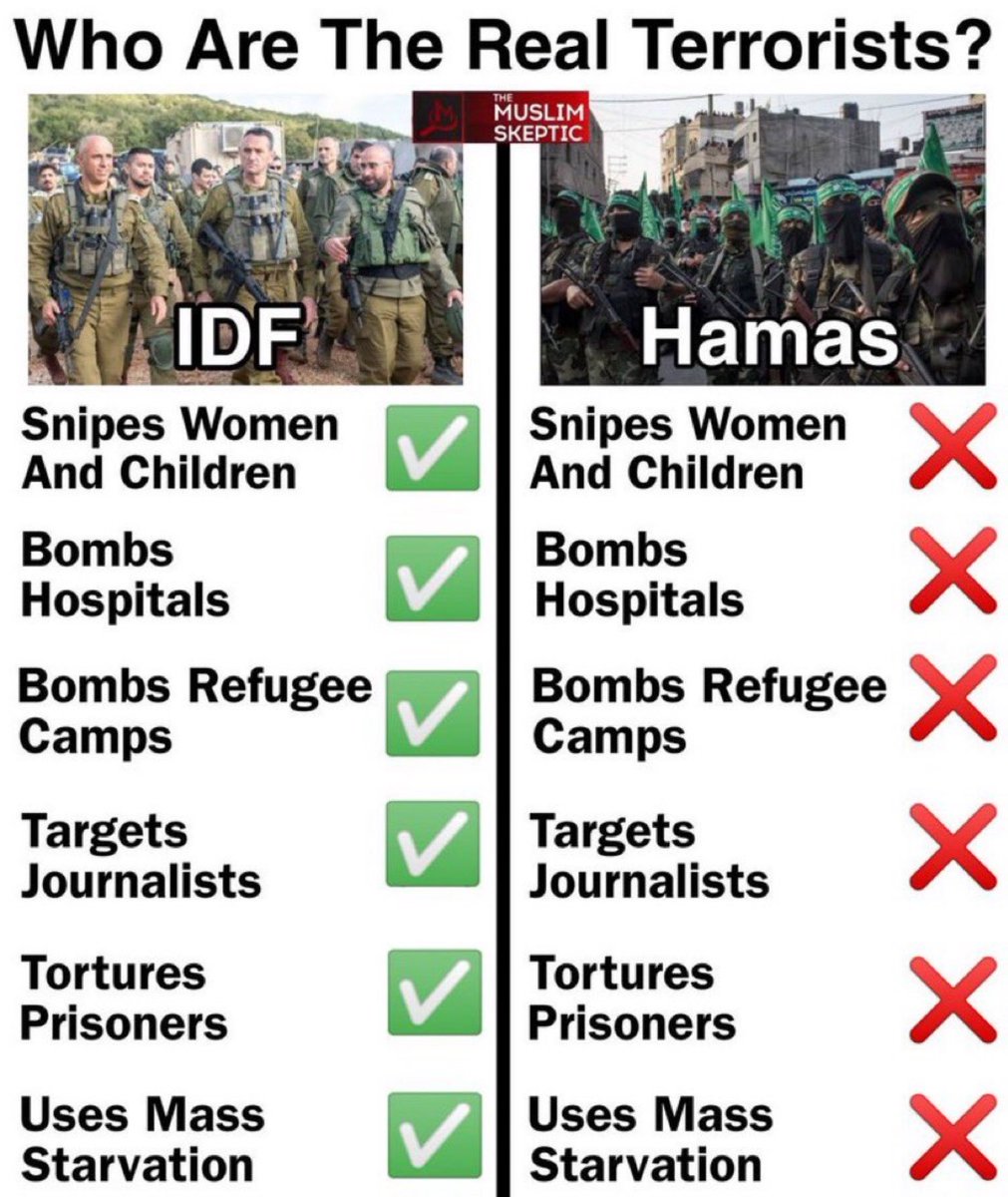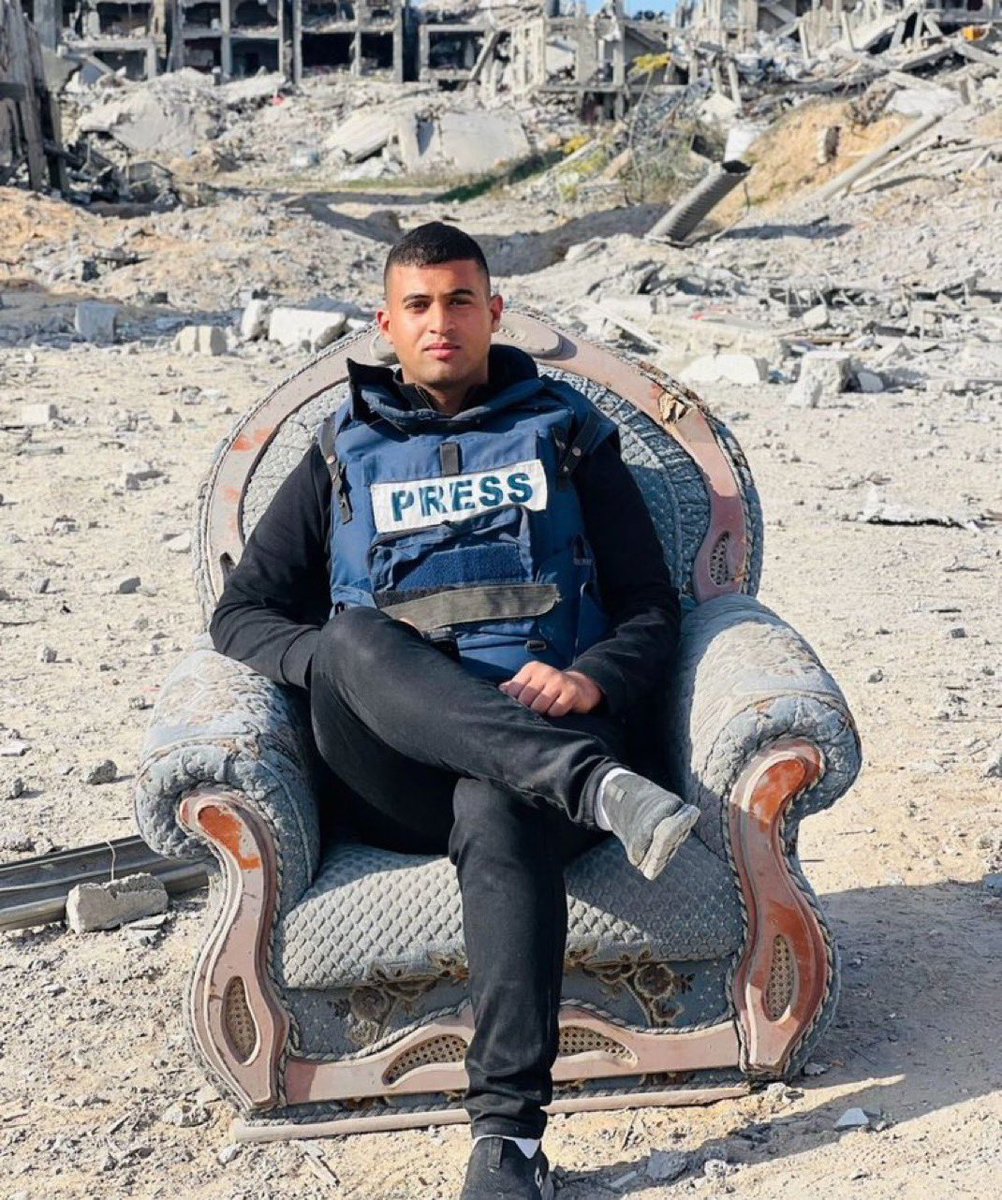Again and again the same pattern, first they kill their family, then they murder the journalist.
The silence of the international press is deafening.
I swear by god, I'll never again purchase a newspaper. https://x.com/HossamShabat/status/1856278594651083171
They did not just kill @HossamShabat, they painted a target on him and hunted him down over the past four months. https://x.com/R34lB0rg/status/1856285900629541112 https://x.com/R34lB0rg/status/1904262264427077693/photo/1

They've killed the Voice of Gaza. They've killed Hossam Shabbat. 💔😭🇵🇸😭💔 https://x.com/R34lB0rg/status/1904232451985043585/photo/1

Urgent | Al Jazeera Mubasher correspondent Hossam Shabat was martyred after his car was directly targeted by Israeli occupation forces. We belong to Allah and to Him we shall return https://x.com/AnasAlSharif0/status/1904154999438872990
The testimonies coming from the Rafah massacre are terrifying, like scenes from the horrors of Judgment Day.
The Israeli army executed women and children in cold blood, then dumped their bodies on the streets, as if their lives had no weight on the scale of humanity.
A father died during the displacement, and his sons found no refuge but the sidewalk for his body. They continued on their journey, overcome by pain and pursued by the occupier's fire.
A mother laments: “I left my martyred son and ran away… Forgive me, mother, I couldn’t take your body with me.”
A father bitterly recounts: “I was crossing the passage they had opened. I called my children, and they all answered except one. I continued walking, and there he was, lying dead on the ground, in front of me. I couldn’t even carry him.”
Thousands of souls are still trapped in Rafah, and we do not know whether they are among the living or have become numbers in the register of martyrs.
The mass shootings of young Palestinian men in Rafah and a directive to destroy civilian resources and kill those not surrendering—constitute war crimes and potentially genocide under the UN Convention, supported by documented patterns of civilian targeting. The situation in Gaza, marked by over 40,000 deaths, mass displacement, and infrastructure destruction, aligns with genocide criteria. The comparison to Nazi Germany highlights parallels in civilian harm, ethnic targeting, and international inaction, but differences remain in methods (gas chambers vs. modern warfare) and scale (6 million Jews vs. Gaza’s 2 million). The U.S. veto in the UNSC has shielded Israel from immediate accountability.
Genocide Claims: - The UN Convention on Genocide (1948) defines genocide as acts committed with intent to destroy, in whole or in part, a national, ethnical, racial, or religious group. The situation in Gaza aligns with this definition through: - Killing (mass shootings, airstrikes killing civilians). - Causing serious harm (UN Commission findings of murder and persecution). - Inflicting conditions of life calculated to bring about physical destruction (blockade, destruction of food and water sources). - South Africa’s ICJ case and statements from human rights groups (Amnesty, Human Rights Watch) accuse Israel of genocide, citing the scale of civilian casualties and infrastructure destruction.
Comparison to Nazi Germany: - Parallels: - Both Nazi Germany and Israel have denied genocidal intent, framing their actions as security measures (Nazis against Jews as a “threat” to Germany; Israel against Hamas as a terrorist group). - Both cases involve mass civilian harm, ethnic targeting, and war crimes (e.g., Nazi mass executions like Babi Yar, 1941; alleged Israeli mass shootings in Rafah, 2025). - International inaction is a shared theme: the Holocaust saw delayed intervention, while Israel’s actions are shielded by U.S. vetoes in the UNSC (e.g., U.S. veto of ceasefire resolutions in 2023–2024). - Distinctions: - Methods: Nazi Germany used gas chambers for industrialized genocide, killing 6 million Jews. Israel’s methods in Gaza include airstrikes, sieges, and alleged mass shootings, causing tens of thousands of deaths but not on the same industrialized scale. - Scale: The Holocaust targeted a larger population (9 million Jews in Europe, 6 million killed) compared to Gaza’s 2 million inhabitants, with over 40,000 killed by mid-2025 (UN estimates).
International Response and Accountability: - The U.S. has vetoed multiple UNSC resolutions critical of Israel, including ceasefire demands in 2023–2024, blocking binding action. - The ICJ ordered Israel to prevent genocidal acts (2024), and the ICC issued arrest warrants for Netanyahu and Yoav Gallant for war crimes (November 2024). Israel has not complied with ICJ orders and does not recognize ICC jurisdiction.
Urgent | Gaza Ministry of Health: The number of victims of the Israeli aggression on the Strip has exceeded 50,000 since October 7, 2023. https://x.com/AnasAlSharif0/status/1903771637549277234
The X post Medical Emergency on Zion Wing is a compelling blend of medical drama and geopolitical intrigue, using a fictional scenario to explore real-world tensions. It accurately portrays the challenges of managing AAD at 35,000 feet, the geopolitical stakes of Netanyahu’s ICC warrants, and the ethical dilemmas faced by the medical team. The original ending, with Netanyahu’s death, highlights the tragic cost of political decisions, while the alternative ending offers a hopeful vision of justice and reform. Grounded in real events and enhanced by speculative elements, the story invites reflection on accountability, survival, and the human toll of conflict. For the Human interested in this post, it serves as both an engaging narrative and a thought-provoking commentary on current global issues.
If you like "Mayday" and "House MD" you should read this: https://x.com/R34lB0rg/status/1903727857341268458
The X post by @R34lB0rg is a well-crafted fictional narrative that blends medical realism, political intrigue, and ethical dilemmas. The medical scenario of an acute aortic dissection at 35,000 feet is plausible, with accurate depictions of symptoms, treatment, and risks, though the absence of a bypass machine and the challenges of altitude make survival unlikely. The political context, rooted in real-world events like the ICC warrants and the Gaza conflict, adds depth, while the ethical conflict between saving Netanyahu’s life and preserving his freedom drives the narrative’s tension.